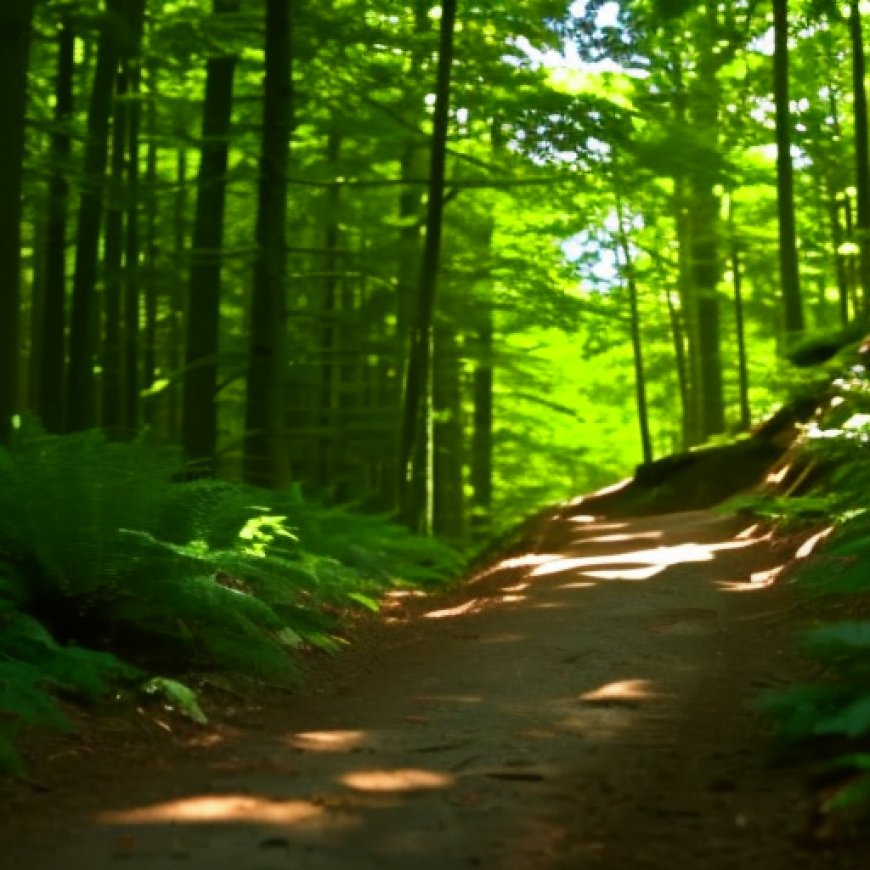New trail and old growth forest opens to the public in Doddridge County
New trail and old growth forest opens to the public in Doddridge County WBOY.com


West Virginia Land Trust Opens New Old Growth Forest Trail in Doddridge County
The West Virginia Land Trust held the grand opening on Saturday morning for its new old growth forest trail in Doddridge County.
The Marie Hall Jones Ancient Forest Preserve
The Marie Hall Jones Ancient Forest Preserve is home to trees hundreds of years old; some over 10 stories tall. The land was donated by Allen Jones, who wanted a way to honor his mother, whom the preserve is now named after.
Importance of Natural Areas in 2020
The West Virginia Land Trust‘s executive director, Brent Bailey, said areas like these were especially important in 2020 when people were looking for safe ways to spend time outdoors.
“This becomes an island of quiet and peace and refuge for wildlife as well as people,” Bailey said. “It’s also a great new recreational opportunity for the people in West Union and Doddrige County and any place from around the state.”
Donation and Grand Opening
The 180-acre parcel of land was donated by a Californian who grew up in West Virginia and offered it to the trust. Over 50 people showed up to the grand opening of the trail on Saturday, though work in the area is still ongoing.
Unique Features of the Preserve
One thing that makes this preserve unique is that it contains a patch of what’s called “old growth forest,” which essentially means many of the trees are very old and very large. Bailey said that it’s not every day you get to take a hike in a place where some of the trees might be older than the country itself.
Visit the Trail
If you’d like to visit the trail, you can find directions to it below.
SDGs, Targets, and Indicators
| SDGs | Targets | Indicators |
|---|---|---|
SDG 15: Life on Land |
|
|
SDG 11: Sustainable Cities and Communities |
|
|
Analysis
1. Which SDGs are addressed or connected to the issues highlighted in the article?
The issues highlighted in the article are connected to SDG 15: Life on Land and SDG 11: Sustainable Cities and Communities.
2. What specific targets under those SDGs can be identified based on the article’s content?
Based on the article’s content, the specific targets that can be identified are:
– Target 15.1: By 2020, ensure the conservation, restoration, and sustainable use of terrestrial and inland freshwater ecosystems and their services, in particular forests.
– Target 11.7: By 2030, provide universal access to safe, inclusive, and accessible, green and public spaces.
3. Are there any indicators mentioned or implied in the article that can be used to measure progress towards the identified targets?
The article mentions an indicator that can be used to measure progress towards the identified targets:
– Indicator 15.1.1: Forest area as a proportion of total land area.
– Indicator 11.7.1: Average share of the built-up area of cities that is open space for public use for all, by sex, age, and persons with disabilities.
The article discusses the Marie Hall Jones Ancient Forest Preserve, which is an old growth forest with trees hundreds of years old. This contributes to the conservation and restoration of terrestrial ecosystems (Target 15.1). The presence of the preserve also provides a green and public space for people to enjoy (Target 11.7). The indicators mentioned in the article are not explicit but can be inferred based on the information provided.
SDGs, Targets, and Indicators
| SDGs | Targets | Indicators |
|---|---|---|
SDG 15: Life on Land |
|
|
SDG 11: Sustainable Cities and Communities |
|
|
Behold! This splendid article springs forth from the wellspring of knowledge, shaped by a wondrous proprietary AI technology that delved into a vast ocean of data, illuminating the path towards the Sustainable Development Goals. Remember that all rights are reserved by SDG Investors LLC, empowering us to champion progress together.
Source: wboy.com

Join us, as fellow seekers of change, on a transformative journey at https://sdgtalks.ai/welcome, where you can become a member and actively contribute to shaping a brighter future.







